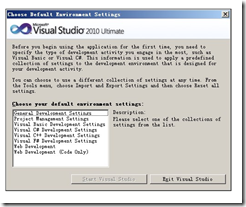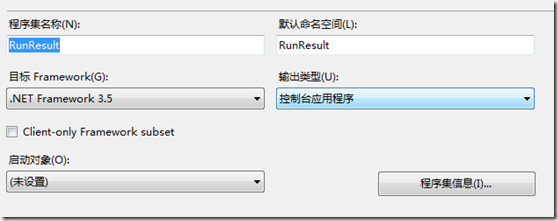【译】MVC3 20个秘方-(7)为结果排序
问题
你有一个很庞大的列表(例如,图书列表),你不能很容易找到你想找的东西。以列表中某一列为基础排序,可以帮助你更快的去找到你想要的东西。
解决方案
在book list的标题上添加一个链接。当用户点击链接的时候,使用Dynamic Linq Library去为结果排序,给予选择的列。(升序或者降序)。再点一次链接的话,就会反转顺序。
讨论
和以前我用过的框架相比较,我对于在自动生成的View里添加一个排序有点惊讶。希望在未来版本的MVC中,脚手架可以帮我们去做这件事。另一件我需要做的事就是在ASP.NET MVC 的主页上提供一个或更多的选项可以去切换排序。在图书的例子里,只有5个列需要被排序,也不算太糟。但是如果这个功能应用到其他的例子上。可能是作者列等,工作量就要增加啦!在下边的例子,我们如果用Dynamic Linq Library就简单多啦!
默认的,linq 类库 允许强类型的表达式从数据库生成结果。这有一些优势,比如,全方位的智能感知,编译时错误消息。当然,就像我上边说的,Build那些有用的功能也变成了很大的工作量。
为了支持排序,在BooksController 和Books index view 需要做以下更改:
@model IEnumerable<MvcApplication.Models.Book>
<h2>@ViewBag.Title</h2>
<p>
@Html.ActionLink((string)ViewBag.CreateLink, "Create")
</p>
<table>
<tr>
<th>
@Html.ActionLink((string)ViewBag.TitleDisplay,
"Index", new { sortOrder = ViewBag.TitleSortParam })
</th>
<th>
@Html.ActionLink((string)ViewBag.IsbnDisplay,
"Index", new { sortOrder = ViewBag.IsbnSortParam })
</th>
<th>
@ViewBag.SummaryDisplay
</th>
<th>
@Html.ActionLink((string)ViewBag.AuthorDisplay,
"Index", new { sortOrder = ViewBag.AuthorSortParam })
</th>
<th>
@ViewBag.ThumbnailDisplay
</th>
<th>
@Html.ActionLink((string)ViewBag.PriceDisplay,
"Index", new { sortOrder = ViewBag.PriceSortParam })
</th>
<th>
@Html.ActionLink((string)ViewBag.PublishedDisplay,
"Index", new
{
sortOrder =
ViewBag.PublishedSortParam
})
</th>
<th>
</th>
</tr>
@foreach (var item in Model)
{
<tr>
<td>
@Html.DisplayFor(modelItem => item.Title)
</td>
<td>
@Html.DisplayFor(modelItem => item.Isbn)
</td>
<td>
@Html.DisplayFor(modelItem => item.Summary)
</td>
<td>
@Html.DisplayFor(modelItem => item.Author)
</td>
<td>
@Html.DisplayFor(modelItem => item.Thumbnail)
</td>
<td>
@Html.DisplayFor(modelItem => item.Price)
</td>
<td>
@Html.DisplayFor(modelItem => item.Published)
</td>
<td>
@Html.ActionLink((string)ViewBag.EditLink,
"Edit", new { id = item.ID }) |
@Html.ActionLink((string)ViewBag.DetailsLink,
"Details", new { id = item.ID }) |
@Html.ActionLink((string)ViewBag.DeleteLink,
"Delete", new { id = item.ID })
</td>
</tr>
}
</table>
在上边的例子中,前边创建的<th>标签已不再是静态的文本。已经使用ActionLink替换成了HTML Helper中的HTML link。
接下来BookController的Index action也需要被更新。这个action将要接收一个新的参数:sortOrder。接下来我们要使用LINQ 根据这列为结果排序。微软已经提供了一个免费的 动态查询类,它是linq下的扩展,允许你根据表达式动态的查询。命名空间为using System.Linq.Dynamic。下载这个类的C#版本可以访问:http://msdn2.microsoft.com/en-us/vcsharp/bb894665.aspx.(译者:记得点下边的I accept啊!)下载完,你需要解压缩。动态linq查询类可以在这里被找到: ~\CSharpSamples\LinqSamples\Dynamic
Query\DynamicQuery\Dynamic.cs. 这个文件一定要加到项目里。为了合理组织项目结构。我建议你把他加到Utils目录下。右击Utils目录->添加->已经存在的项,并找到dynamic linq
class (或者你直接把那个文件夹拖拽到Utils目录下)。
添加完成后,按照如下代码更新BooksController:
using System;
using System.Collections.Generic;
using System.Data;
using System.Data.Entity;
<补充:Web开发 , ASP.Net ,




